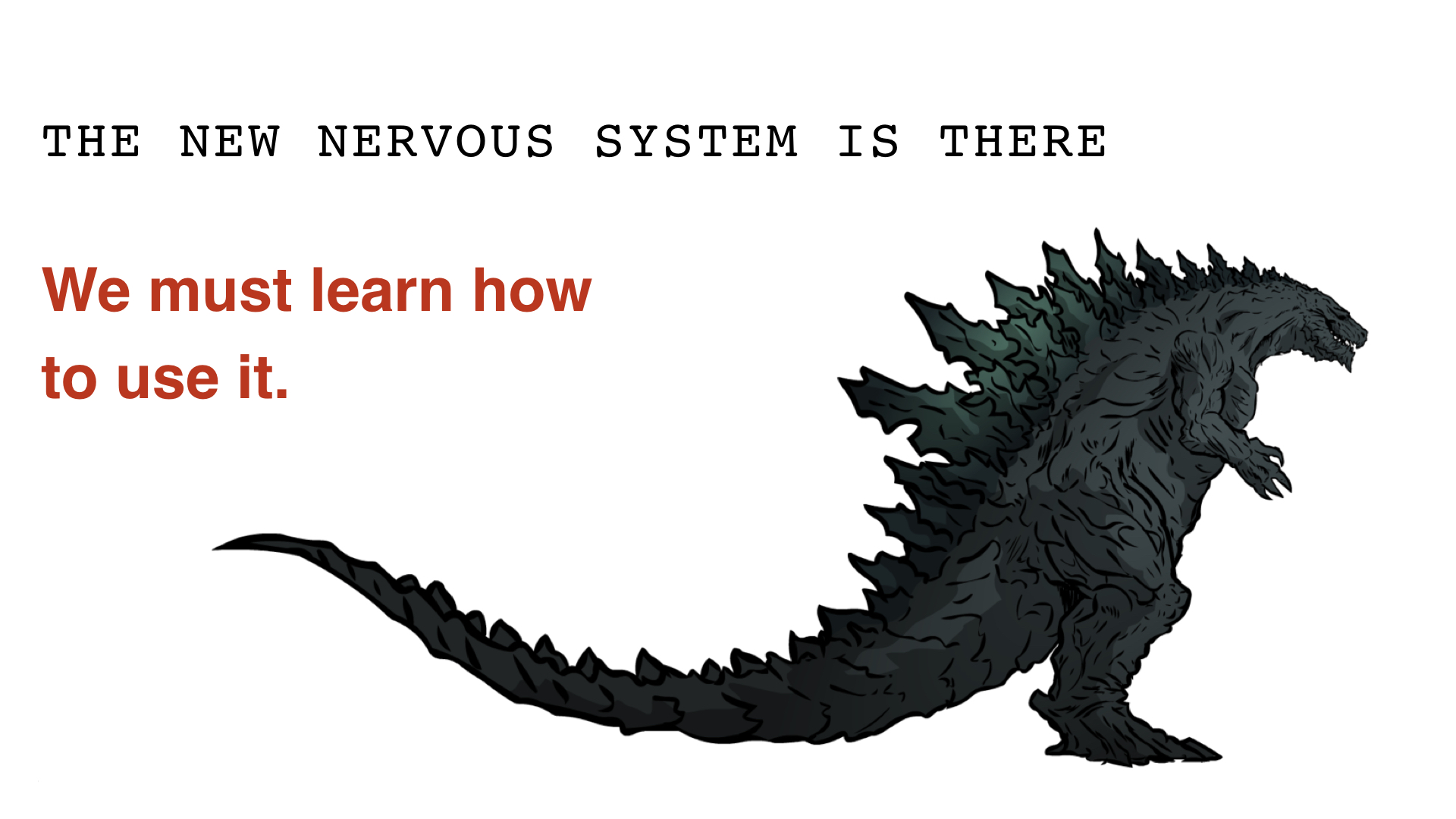Collective mind insight
Contents
Five Insights: Collective Mind
Interests
- Communication
- Media
- IT innovation
- Public sphere
- Public informing
- Knowledge work
- Disciplinary and transdisciplinary organization of academic work
- Social organization or knowledge work
Scope
We look at the Internet as a collective nervous system; and at our various collective minds, large and small. How do they operate? What 'program' or 'algorithm' do they run, so that each of the 'cells' may have the information it requires – so that the whole thing may function?
Yes, this is just a specialization of the power structure scope, but a centrally important one: As the cyberneticians observed, communication is what really what turns a bunch of things into a system!
Furthermore, for systemic innovation to be in place, the source of illumination must be right; it must show us the whole.
And furthermore there's this new kid on the block:we've just gotten the new information technology!
Insight
By depicting our civilization as a Godzilla-like animal, this ideogram points to the main insight discussed here. The point is to see us all interconnected by modern IT as cells are connected in a human mind. We have gotten a new nervous system. How shall we use it?
The point here is that we've inherited the 'algorithm' by which we handle knowledge. From a culture whose technology (the printing press) enabled only broadcasting! But the new information technology is a nervous system! Imagine your cells broadcasting data to each other and to your brain – and you'll easily see why broadcasting leads to collective madness! And why a completely new social organization of knowledge work (which we called federation) is needed to restore collective intelligence.
Reversals
- Communication: ("It's a good idea...") It cannot be broadcasting!
- Media: We used the media to destroy communication.
- IT innovation: Must become systemic. The common technical keyword is "digital transformation" (as distinguished from "digitization" and "digitalization").
- Public sphere: Habermas' likely main insight is that without a functioning public sphere, democracy is impossible. And we've lost it! Now it can be reconfigured!
- Public informing: Must be federated; must be systemic; we just cannot, absolutely cannot, have the public informing where the busy journalists are looking for any sort of sensation, to captivate people's attention... That's just so Middle Ages, isn't it?
- Knowledge work: Must be continuously re-created. Its structure must be a result of bootstrapping.
- Disciplinary and transdisciplinary organization of academic work: They are two sides of a single coin. Without the trans part, the disciplinary academic work has no effect.
- Social organization or knowledge work: Once again – it must be running a different algorithm; it must be federated. It must be topic-based...
Story
The Incredible History of Doug has already been told in so many places. Begins with Bush's observation. What might be the largest contribution to human knowlege? Why didn't the Silicon Valley get it?
Federation
Knowledge = Mountain
The "killer app" is a "mountain-building kit". The Holoscope.
Keywords
Prototypes
Barcelona 2011 Innovation Ecosystem for Good Journalism (in public informing)
Tesla and the Nature of Creativity (in scientific communication)
Collaborology (in education)
- Back to five insights.

